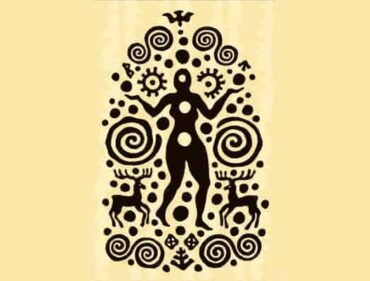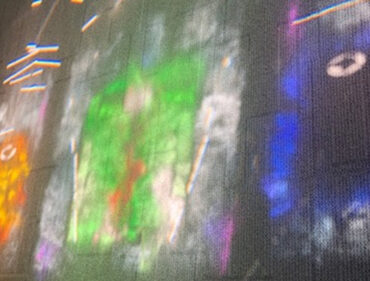Article: Depth Hypnosis: Where Fierce Compassion and the Path of the Wounded Healer Converge
By Isa Gucciardi, Ph.D.
Summary: In Depth Hypnosis, the transformation of the core wounding of the Depth Hypnosis Practitioner is fundamental. This allows the Practitioner to hold clients’ wounding with fierce compassion and provide a space for clients to assume greater personal responsibility for their suffering, and thereby have more insight and heal more deeply.
Dr. Robert Thurman, noted Buddhist scholar, has stated that the future of Buddhism in the West lies in meditational therapies. One such meditational therapy is Depth Hypnosis. Depth Hypnosis is a therapeutic model that incorporates the wisdom of two very ancient healing and spiritual modalities (Buddhism and shamanism) with two more modern approaches (hypnotherapy and transpersonal psychology) to address emotional and spiritual imbalance.
Buddhism is often thought of as a religion, but in its essence, it is really a non-dogmatic formula for the transformation of the core negativity that prevents us from being at peace. Shamanism offers simple yet profound systems of managing and directing power, and ways of understanding the inner workings of the world of spirit.
Hypnotherapy provides an accessible avenue of approach to the unconscious content of the modern mind. And transpersonal psychology provides a context in Western therapeutic paradigms for a type of deeper healing that can be accessed by the rational mind, yet goes far beyond it.
Depth Hypnosis is primarily engaged with the healing of the fragmentation of the Western mind. The development of Depth Hypnosis Practitioners focuses on helping them hone tools (in Buddhist terms: to generate skillful means) that will provide assistance in navigating the seas of the fragmented mind. By developing this capacity, they help the client move toward a greater state of wholeness.
At a Buddhist practice level, the practice for clients is to move into this state of wholeness in an authentic way so they can move to the next level of practice of letting go of the grasping at a concept of Self. The Buddhist practice level for Depth Hypnosis Practitioners is more Tantric in nature: to facilitate transformation. Through this practice, they gain insight into, and understanding of, the larger field in which human experience takes place.
The development of compassionate holding of all phenomena is at the heart of this therapeutic model. This holding is extended to the ways in which one has created one’s own suffering and created suffering for others and toward the ways one has created one’s own obstacles. Depth Hypnosis Practitioners are expected to deepen their understanding of the nature of compassion continuously as they engage in providing counseling in this model.
In particular, they seek to understand the nature of fierce compassion. This understanding is developed through shamanic practices that are similar to deity meditation practices in Tibetan Buddhism. Through the direct interaction with the fields of power these practices provide, practitioners learn how fierce compassion transforms. When wielded in a counseling practice, fierce compassion does not allow clients to shrink back from the acknowledgement of the suffering they have caused themselves and others.
The effects of actions and thoughts arising from ignorance, aversion, and desire are kept squarely on the table for exploration, but this process is held in a container of compassion that is as deep and wide-ranging as possible. This allows for honest self-exploration without guilt, blame, or the quest for self-righteousness, all of which can slow down or stop the transformative process.
The training required to wield the sword of fierce compassion effectively is not an easy training to undertake. It requires practitioners to be willing to go into any place within them where they have remained unconscious regarding the nature of their pain and the way they relate to their pain. Practitioners are brought through a series of Depth Hypnosis processes, where the defenses and constructs that are used to solidify the sense of separateness pain creates are dissolved.
As Depth Hypnosis Practitioners develop a consciousness of the space within themselves that lies beyond the field of their pain, they become steadier and steadier in holding fierce compassion for themselves and others. As this capacity develops, they are able to hold and direct greater and greater amounts of consciousness into their own fragmentation.
This prepares them to be of service to others in directing consciousness into the fragmentation of others. The goal of this area of Depth Hypnosis training is similar for some Tantric Buddhist practitioners: to be able to become or embody a “Buddha field.” This is the capacity to compassionately hold a force field or container with which others can engage. By coming into contact with this kind of field, clients can participate as fully as they can in the catalytic processes that are required for the dissolution of negativity.
Depth Hypnosis, like other catalytic spiritual paths, benefits both the one who serves and the one who is served. The desire to be of service to others in relieving suffering that draws people to a practice like Depth Hypnosis becomes the path through which practitioners emerge from their own suffering. One cannot remain in a vacuum of unresolved pain and be able to truly help another effectively emerge from suffering.
It is through the exploration their own pain that Depth Hypnosis Practitioners prepare to become the container for the transformation of another person’s pain. Shamanism, which is another engine of Depth Hypnosis, is often referred to as the path of the wounded healer. This is a reference to the process through which shamanic initiates become, in shamanic terms, power-filled enough to help another heal.
This process includes traversing fields of personal pain, and doing whatever is necessary to open, accept, embrace, and transform one’s relationship to that pain. In this process, the path of the healing of one’s own pain becomes a method for gathering maps or guidebooks (skillful means) to assist in the healing of another’s pain.
In many shamanic traditions, there are initiations that are designed to create a situation where initiates undergo a ritual wounding and learn to heal it in order to move from one level of practice to another. The path of healing that wound becomes a path of knowledge.
From a Buddhist perspective, all those who are fortunate enough to encounter the dharma are in the process of healing the wounds of their karma. In the modern context, ritual wounding is not necessary to produce a consciousness regarding one’s relationship to pain. Most modern Westerners feel they have experienced wounding just through the experience of living.
Depth Hypnosis approaches the wounding the client draws from life experience as the revelation of the client’s karmic path. It views the anatomy of the wounding as information regarding the ways clients’ karma twists them away from their core self, or Buddha nature. And Depth Hypnosis brings the catalytic processes that Buddhism and shamanism provide into a Western therapeutic context to assist clients in approaching, comprehending, and dissolving this karma.
In working with others, practitioners are trained to be able to withstand the pressure chamber of fear, hatred, loathing, pride, or judgment that clients might use to defend crystallizations of negativity that form around wounding. Many therapeutic models cannot go into the heart of negativity because they do not have effective methods for approaching, confronting, and dissolving it.
Understanding how to work with fierce compassion provides a very effective tool for moving into the heart of negativity. Clients are able to allow the contact or revelation of deeply held negativity because of the supportive yet transformative nature of fierce compassion. It is especially effective in revealing the ways clients use their pain, or the constructs they have built around their pain, as a weapon, either against the practitioner or against themselves. The ability of fierce compassion to reveal these hidden processes that can be at the heart of many imbalances is one of the reasons Depth Hypnosis is such an effective therapeutic model.
In the modern environment, therapeutic models that do not have tools like fierce compassion to move into wounding in this way are incomplete. They risk failing to recognize the opportunity and the lessons the wound, or the symptoms that cover the wound, have to offer. In the vacuum that is created by loss of the demand that clients take full responsibility for their reaction to their situation, it is difficult for true healing to occur.
Models where the holding and describing of the wound is the primary therapeutic goal fall short. Models where the wound is corralled and medicated so as not to create complications fall short. Models that cater to the wounded client in any way without requiring clients to seek to understand how their actions have contributed to the wounding fall short.
They fall short because clients are robbed of the opportunity to learn the lessons their wounding provides. They do not have the opportunity to understand how their wounding is showing them how they have twisted away from their core self, or their Buddha natures. They lose the opportunity to follow the path of this twisting back to their Buddha natures with all the assistance that fierce compassion can provide.
Depth Hypnosis brings together the Buddhist understanding regarding the transformative capacities of fierce compassion together with the shamanic understanding of the opportunities wounding opens. This is a potent combination that is relevant and important in the modern therapeutic context.
LIKE THIS ARTICLE? SIGN UP FOR FREE UPDATES!



